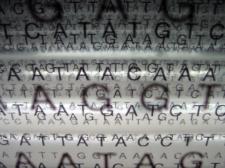Scientists unveil the ‘most clever CRISPR gadget’ so far
By Sharon Begley,
STAT
| 04. 20. 2016
Untitled Document
For all the hoopla about CRISPR, the revolutionary genome-editing technology has a dirty little secret: it’s a very messy business. Scientists basically whack the famed double helix with a molecular machete, often triggering the cell’s DNA repair machinery to make all sorts of unwanted changes to the genome beyond what they intended.
On Wednesday, researchers unveiled in Nature a significant improvement — a new CRISPR system that can switch single letters of the genome cleanly and efficiently, in a way that they say could reliably repair many disease-causing mutations.
Because of “the cell’s desperate attempts” to mend its genome, said Harvard University biologist George Church, “what often passes as ‘genome editing’ would more appropriately be called ‘genome vandalism,’” as the cell inserts and deletes random bits of DNA where CRISPR cuts it.
Continue reading on STAT...
Image via Flickr
Related Articles
By Katherine Long, Ben Foldy, and Lingling Wei, The Wall Street Journal | 12.13.2025
Inside a closed Los Angeles courtroom, something wasn’t right.
Clerks working for family court Judge Amy Pellman were reviewing routine surrogacy petitions when they spotted an unusual pattern: the same name, again and again.
A Chinese billionaire was seeking parental...
By Sarah A. Topol, The New York Times Magazine | 12.14.2025
The women in House 3 rarely had a chance to speak to the women in House 5, but when they did, the things they heard scared them. They didn’t actually know where House 5 was, only that it was huge...
By Sarah Kliff, The New York Times | 12.10.2025
Micah Nerio had known since his early 30s that he wanted to be a father, even if he did not have a partner. He spent a decade saving up to pursue surrogacy, an expensive process where he would create embryos...
By Carter Sherman, The Guardian | 12.08.2025
A huge defense policy bill, revealed by US lawmakers on Sunday, does not include a provision that would have provided broad healthcare coverage for in vitro fertilization (IVF) for active-duty members of the military, despite Donald Trump’s pledge...




